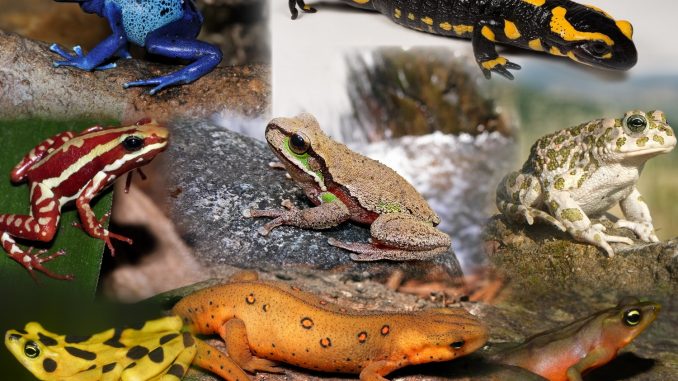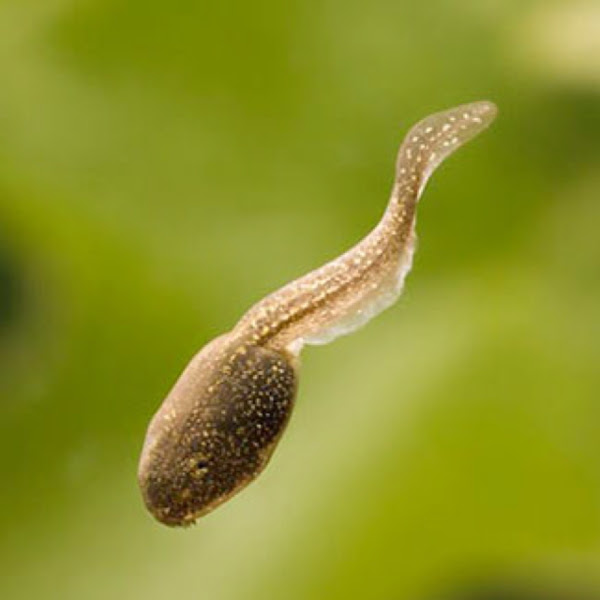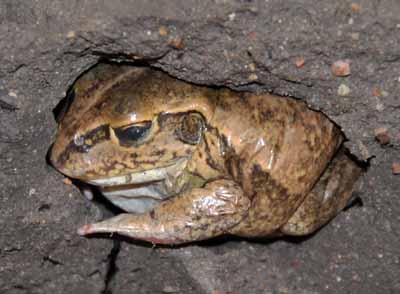
Natural history:
- The amphibians (the vertebrates with dual life) were the first vertebrates to invade land, but they aren’t fully dependent to terrestrial life.
- They occur in fresh water and moist land but no marine forms.
- Some frogs live on trees. E.g. Hyla
Life phases:
- The amphibians undergo metamorphosis and generally have two phases in their life; the larval form and the adult.
- Larval stage, called tadpole, is fish-like, lives in water, swim with a tail.
- Adult stage is terrestrial, moves about with limbs supplied with webs.

General characteristics:
- They are poikilothermic (cold blooded) animals and most forms hibernate in winter and aestivate in summer.
- The carboniferous period is regarded as the age of amphibians.
- The body may be long and narrow, short and broad, depressed or cylindrical.
- The body may be divisible into head, trunk and tail (salamander) or only into head and trunk (frog).

Appendages
- There are two pairs of pentadactyl limbs, each with 4-5 or fewer digits.
- The digits are without claws, nails or hooves, and often with webs.
- The skin is without scales, smooth, moist, rich in multicellular mucous or poison glands.
- Skull is flat and dicondylic (with two occipital condyles).
Digestive system:
- The mouth is large and armed with acrodont and vomerine teeth in the upper jaw.
- They have a true tongue and it is soft, mucous-coated and attached at the front end (protrusible tongue).
- Distinct liver and pancreas are present.
- Alimentary canal leads into the cloaca.
Respiratory system:
- Tadpoles respire through gills as they live in water.
- Adults respire with lungs, lining of buccopharyngeal cavity and skin.
- Some forms have vocal cords.
Circulatory system:
- Circulatory system is closed and the heart is three chambered: two auricles and one ventricle.
- The ventricle pumps the mixed blood; sinus venosus and truncus arterisus are present.
- Well-developed renal portal system and hepatic portal system are present.
- RBCs are oval, biconvex and nucleated.
Excretory system:
- Kidneys are pronephric in larvae and mesonephric in adult.
- Waste material is either urea (in ureotelic or tailless forms) or ammonia (in ammoniotelic forms or larvae and tailed forms).
- Urinary bladder is present.
Reproductive system:
- The gonoducts lead into the cloaca.
- Male lack a copulatory organ.
- Fertilization may either be external or internal.
- Most forms are oviparous; eggs have a coat of jelly and usually laid in water.
Sense organs:
- The olfactory sacs are paired and dorsal.
- Eyes often have movable lids.
- Middle ear with a single auditory ossicle is present in addition to the internal ear.
- Tympanum covers the middle ear but there is no external ear.
- Lateral-line sense organs are present in the larvae and in aquatic forms but absent in terrestrial forms.
- There are 10 pairs of cranial nerves and 9-10 pairs of spinal nerves.